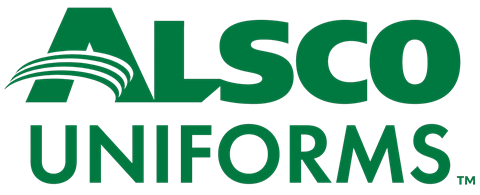Slips and trips often garner a few good laughs. As such these trivial accidents are often overlooked in the workplace.
It is, however, important to note that these minor acts of clumsiness can attribute to injury. The bigger question is, was it about clumsiness or is your workplace safe?
It is inevitable for miners to always be on alert as they are most susceptible to trips and slips. Part of their work requires them to stand for long hours.
Different safety mats are in place to make sure that they are covered for any possible circumstance.
Request a quote today and get a Welcome Mat Trial*. Absolutely free!
An Overview of Work-related Injuries
A study conducted on work-related injuries shows a significant correlation between male and female victims. Women (17%) are more susceptible than men (11%) to encounter slips and trips. This translates to 39,000 men and 48,000 women suffering from a related injury over a year.
Slips and trips are the second leading cause of workplace injuries. These accidents frequently result in severe injuries requiring extensive and expensive recovery and lost time. From an excruciating sprained ankle to a disastrous fall from a stairwell, Slips and trips need to be taken seriously.
It is important to define these terms in order to better understand the dilemma:
Fall – Can be generally caused by a person’s sudden loss of balance. It does not always have to be due to the work environment.
Slip – A slip can be caused by factors such as a wet or frozen surface, or items that are not secured to trays, a sheet of paper, among others.
Trip – Commonly happens due to overlooked objects lying on the ground. Cables easily catch a person’s foot if left unattended. An uneven edge on the flooring like a dog-eared mat corner or loose tile can certainly spell misfortune.
These injuries albeit minor have to be a focal point of every business’ safety measure. Treatment can be administered with a handy first aid kit. From bruising to sprains and strains – these injuries, however minor, can result in absenteeism.
The Role of the PCBU
A Person Conducting a Business or Undertaking (PCBU) has a very important role. PCBUs must oversee the health and safety risks concomitant to slips and trips. He is designated to minimize if not eliminate these risks in a reasonably practicable manner.
Among a PCBUs duty is to make systematic methodology to the following:
- Identifying hazards
- Making a proactive assessment of risks associated with these hazards
- Managing risk control measures
- Reviewing the implementation and preparation of the risk control measures
How to Efficiently Reduce Slips and Trips in the Workplace
There is a detailed guide to effectively minimize incidents of slips and trips. Here is a link to The Slips And Trips Fact Sheet [1.3MB]
Listed here are the proper way of addressing and managing slips and trips in the workplace. Take note that this list is arranged according to its effectivity level.
| Hierarchy of control | Examples |
| Eliminate the hazard | Take control of your work area from the design state. Carefully plan changes in floor levels and organize necessary recesses. Avoid trailing cords by installing more power outlets in strategic locations. |
| Substitution | Design floors with a more slip-resistant surface. |
| Isolation | Cordon off access to high-risk areas. Make sure the necessary signs and measures are observed when cleaning or other activities are ongoing. |
| Engineering controls (redesign) | Make your floors more slip-resistant by applying appropriate treatments. Illuminate your work area, do not compromise safety over aesthetics. Plan your drainage system well to suffice your business’ requirements. Elevated floors need well designed visual markings. |
| Administrative controls | Intensify training and supervision measures. Devise a systematic housekeeping system. See to it that there is a checklist of the routinary cleaning procedures. Spills should be addressed immediately. |
| Personal protective equipment | Safeguard your staff with slip-resistant footwear. |
Slip Hazards are commonly present when the following occurs:
- Spills of liquid or solid material
- Wet cleaning methods
- Wind-driven rain or snow through doorways
- A sudden change in floor surface like joints
- Between carpet and polished timber
- Change from wet to dry surface
- Dusty and sandy surfaces
- The incline of a ramp
- Loose or bumpy flooring
- Low light levels
- Use of unsuitable footwear
Trip hazards can be avoided by keeping the following in check:
- Ridges in floors or carpets
- Worn floor coverings or broken tiles
- Potholes and cracks in floors
- Changes in floor level
- Thresholds and door stops
- Floor sockets and phone jacks
- Cables from power extension units
- Loads that obstruct vision
- Obstacles in traffic areas
Controlling the Risks of Slipping
Main floor treatments include sandblasting or grinding, chemical etching, coating with resins, and using floor mats or adhesive anti-slip strips. These measures increase the surface roughness of the flooring and improve slip resistance.
Every floor type has its own unique property and thus require a different way or approach to cleaning and maintenance. Below are the different floor types and their characteristics:
Concrete
This type of floor can be slippery over time. This can be more slippery with the application of treatments that prevent dusting and liquid absorption.
Terrazzo
Can be slippery when wet or dusty. Take extra caution when polishing this type of floor as an excess polish can cause the floor to be slippery. This type, however, provides a good appearance and is better than concrete in terms of wear and tear.
Quarry tiles, ceramic tiles
Not recommended to be used as floors. The smooth surface can indeed repel dust easily but it can also cause major slip accidents. It has a good resistance against chemicals and fluids. It may require special cleaning equipment for cleaning.
Glazed ceramic tiles
Soapy water can make the surface very slippery. There are slip-resistant treatments available. These tiles are not to be used as a flooring material.
Vinyl tiles and sheet
Ordinary vinyl tiles and sheet are relatively easy to clean with its smooth surface. Extra care should be given still because water can easily seep in under it. These are slip-resistant types of vinyl available, the thicker and softer types are more slip-resistant.
Cork
It can easily absorb oil and water and can be very slippery when wet.
Steel plate
This sturdy material can nevertheless be prone to wearing. This, in turn, makes it slippery when wet or oily.
Rubber
Make sure to have edges and joints properly secured as this is a common trip hazard. The effectivity of this material can be less effective when wet or damp due to moisture.
Plastic Matting
Cleaning is practically easy with plastic mattings. It can be steam cleaned or hosed down. Interlocking PVC extrusions can provide good drainage and slip resistance.
Carpet
Can be very cost-effective than a hard floor surface. It is important to consider that this material is also highly susceptible to tripping. Also, it must be rubber-backed and with hardwearing tapered edges when used in an entrance or where traffic is high. Pushing trolleys in a carpet can also be a challenge. A carpet with a shallow pile can easily address this concern.
Fibreglass gratings
It can provide good to excellent slip resistance. Fluids are easily drained and can be a good cost solution to flooring requirements.
Controlling Trip and Slip Risks in Your Workplace
Here is a checklist on how to minimize or eliminate slipping hazards caused by liquid and waste from machinery:
- Maintain and adjust the machinery to prevent leakage
- Keep your floor dust-free with exhaust systems to prevent dust from settling down the floor.
- Collect liquid and waste properly with the use of specialized trays
- Immediate action is required for water or oily spills – tools and equipment should be readily available like absorbent paper or powder to clean them up. Make sure the affected areas are residue-free.
- Ensure that the floors are perfectly dry after cleaning
- Should there be areas with a high risk of spills, put up signages accordingly
Control tripping hazard by following these guidelines
- Systematically organize your workplace to segregate storage and work areas.
- Keep the aisles free by providing adequate storage systems
- Eliminate if not minimize the use of cords lying on the floor. As earlier mentioned, have a good number of available sockets and outlets from the planning stage or construction of the workplace.
- Protect sockets with covers and as much as possible, avoid protruding sockets.
- Organize the stacking of goods and materials. Avoid stacking in a single tower.
- Secure power cords appropriately and do not leave them lying on the floor.
- A routinary cleaning regimen should be observed to free the work area of rubbish and obstructions.
Put up signages in a conspicuous area to warn pedestrians about changed or uneven surfaces.
Safety is of Primary Concern
Accidents can be controlled. Keeping our workplace safe for both our employees and customers can ensure longevity and success. That is why Alsco is here to provide you with the best solutions to your safety needs. Our innovative products are perfect even to the harsh work condition of mines.
Alsco has a variety of commercial and industrial mats which now includes the Evolution Mat. A premium quality mat featuring thicker piles and is made out of recycled materials, making it environment-friendly.
Guarantee the safety of your workplace with Alsco. Use an Alsco Mat FREE* for 2 weeks. Enquiry now!
Photo Courtesy: Flickr Image by RandiChiu






